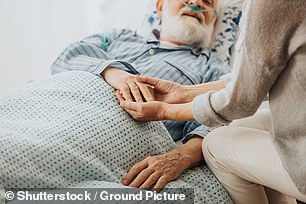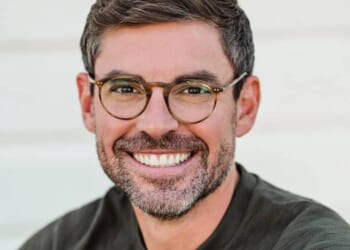This Is Assisted Dying Stefanie Green Scribner £20, 304pp
On her way home from work, Dr Stefanie Green was in an upbeat mood, singing along to the radio ‘and kind of dancing while driving’. Moments later she pulled over and sat in her car, shocked at her behaviour. What would her friends and family say, she wondered, if they knew that ‘I helped someone to die today, and I feel really great about it’?
Green, who practises in and around Vancouver Island in British Columbia, was one of the first doctors in Canada to be a provider of MAiD, or medical assistance in dying – in other words, doctor-assisted suicide. After winding its way through the courts and then parliament, voluntary euthanasia became legal in Canada in June 2016.

Dr Stefanie Green
The new law allowed doctors and nurse practitioners to help someone end their life if they were capable of making decisions about their care and were suffering from a ‘grievous and irremediable condition’. People who chose to die could either opt for a self-administered drink – hardly anyone chose this – or for medication, delivered intravenously.
At the time the law was passed, Green had been a doctor for more than 20 years, specialising in maternity and newborn care. Although she loved her work, she found herself drawn to the idea of supporting people ‘at the other end of life’, as she puts it.
The first patient Green helped to die was Harvey, who had end-stage liver failure. ‘I know my life is over, but I want to be in charge of how it happens,’ he told her. The day before the procedure, Green nervously checked and rechecked all the paperwork, knowing that if she didn’t comply with the letter of the law it could lead to a 14-year prison sentence.
On the day, she agonised over what to wear, eventually deciding grey jeans and a black sweater were appropriate, and she was careful not to speed on her way to Harvey’s house, not wanting to explain to the police why she had a box of lethal drugs in the trunk.
As Harvey’s family gathered outside, she spent time alone with him, asking if he had any second thoughts. They held hands and talked about his life and whether he had any regrets.

She has helped dozens of people end their lives
Finally, Harvey said he was ready and his wife and children came into the room. Green noticed his eyes ‘are full of expression, still sparkling with life… he is calm, he is smiling, and he appears certain’. One by one she administered four different medicines; the whole process took less than ten minutes.
Harvey died exactly as he wanted, in the arms of his children and gazing into his wife’s eyes. As for Green, she was overwhelmed by his family’s gratitude and strangely untroubled by the whole experience. Rather than having ended a life, she felt she had been ‘facilitating someone’s wishes’. Over the next year, Green helped dozens of people to end their life. She came to cherish the time alone with her patients just before they died, when she would check they hadn’t been coerced and chat to them about their lives. ‘I was struck with the honesty of our conversations,’ she writes.
Most people want to die in their own home, surrounded by their family, with their favourite music playing – anything from classical music to AC/DC’s Highway To Hell. One elderly couple lay naked in bed, talking of their love for each other, the wife holding her dying husband tightly as the medicines took effect. Another of Green’s patients didn’t want anyone in the room but her, and for the occasion he had dressed in a clown suit, complete with a comedy nose and a wig. He told her he wanted to go out laughing.
Green comes across as an almost impossibly perfect doctor: deeply committed, caring, thoughtful and sensitive. She works hard to fade into the background, to be sensitive to the families and to keep her emotions in check. The mother of two children, she had overseen more than 40 deaths before she cried for the first time, as she watched her patient’s elderly mother lean forward to embrace her dying daughter.
She believes that simply knowing there is the possibility of a legal, painless death at the time of your own choosing is hugely reassuring to terminally ill people, even if they never decide to go out that way. When people ask her what she does for a living, her reply is that ‘I help people.’
This Is Assisted Dying is her account of her first year as a MAiD practitioner, and one of the weaknesses of this otherwise absorbing and deeply moving book is that Green comes across so few difficult cases in that time. There are no hints of coercion, no children who regard their parents as a burden, and only one patient who is clearly struggling with mental illness rather than a terminal disease. She declines to treat him.
From a British perspective, this book raises many interesting questions about how assisted dying would work here, how doctors would cope, and what an important role good palliative care plays in the choices available to people with terminal illnesses. (The inadequacy of palliative care in Britain was the reason Health Secretary Wes Streeting gave for voting against the Bill that MPs are currently scrutinising.)
Wherever you stand on the assisted dying debate, it’s impossible not to warm to Green’s sincerity and her compassion for her patients. ‘For me, the work is less about how people wish to die than it is about how they wish to live,’ she says. ‘I have learned we can make the choice to embrace our life at any time, even its final moments.’






